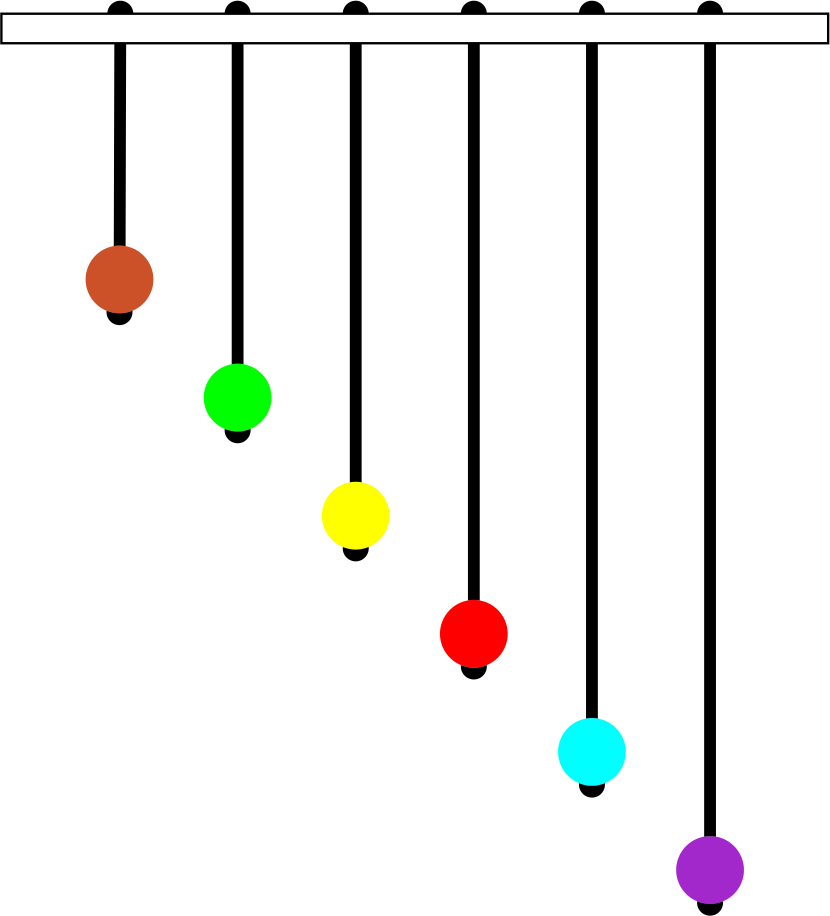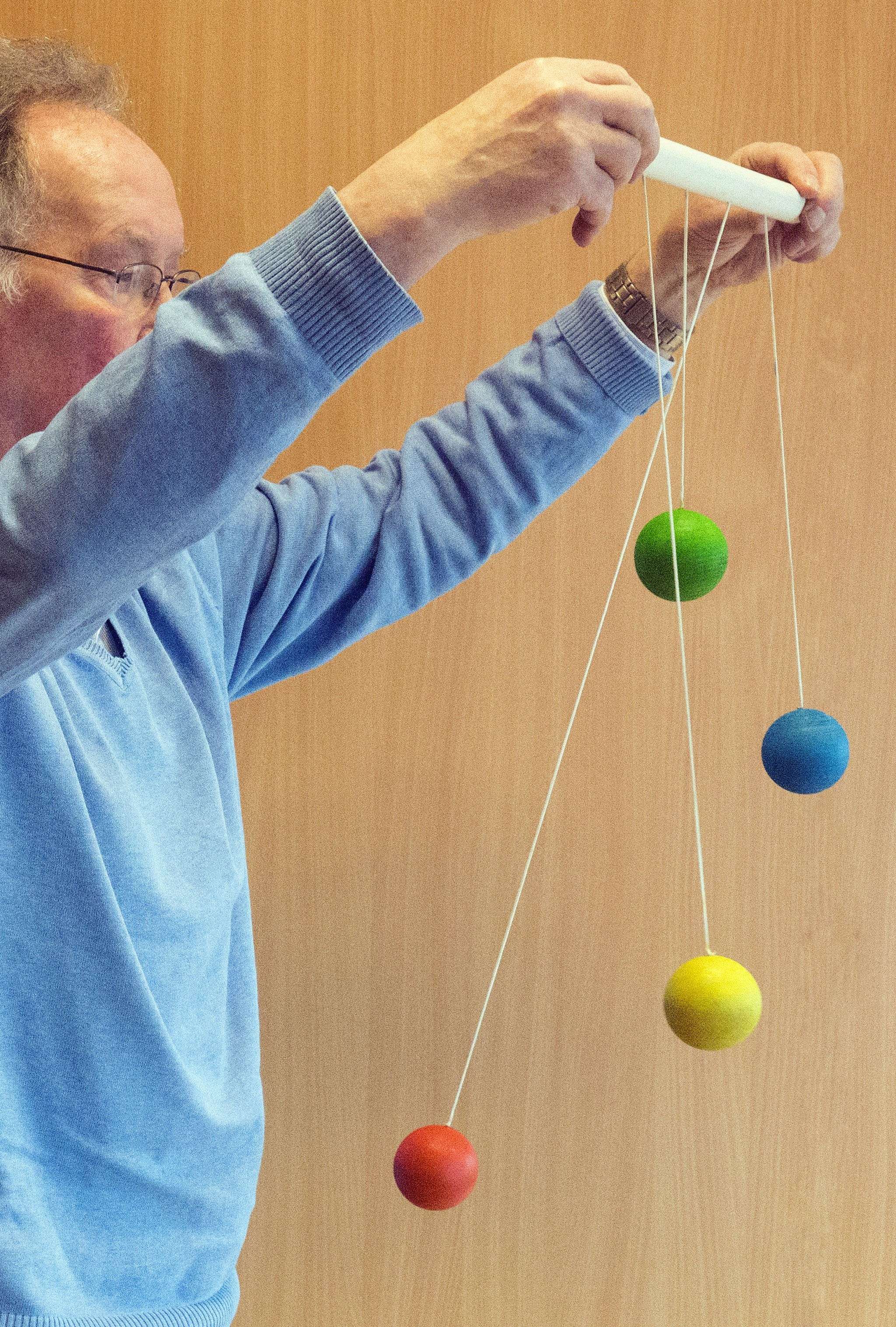20.3. Magic with pendulums#
| Author: | Maarten van Woerkom |
| Time: | 20 minutes |
| Age group: | 12 and up |
| Concepts: | Period, frequency, resonance |
Introduction#
Five or six pendulums are suspended from a rod (Figure 20.11). Gently move the rod back-and-forth and some pendulums will start moving. By tuning the frequency of the turning, the teacher can choose which pendulum will move.

Fig. 20.11 A rod with some balls suspended using strings.#
Equipment#
A 70 cm piece of broomstick as a rod
Several strings with a thickness of several mm
Wooden colored balls with a diameter of approximately 7 cm
Preparation#
Drill a narrow hole through each ball and through the broom stick. The string can be secured on either side with a knot. Practice several times so that you know the resonant frequencies of each ball.

Fig. 20.12 The red ball starts to move.#
Procedure#
Hold the rod on the two ends (Figure 20.12) in such a way that the balls will be in front of your face and body so the attention of the students will not be on the hands but on the colored balls. Now play a game about which ball will start moving. For example, ask students to concentrate on the red ball. Then make the red ball move with almost invisible turns of the rod at resonant frequency of the red ball. Same for other colors, ask the audience which ball should move and tell them that you can do this through your will power. Of course you make clever use of the different resonance frequencies.
Tip
For a large audience it is better to use a large set-up with long pendulums then the resonant frequency is not too high.
Refer to other examples of resonance.
Physics background#
Each pendulum has its unique resonance frequency dependent on its length. Even turning the rod a few mm is sufficient to achieve a large amplitude of the ball if the resonance frequency is used.
